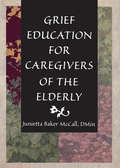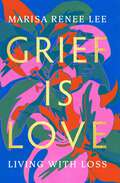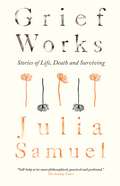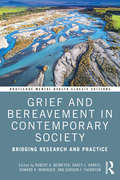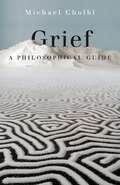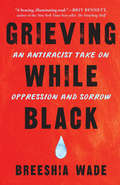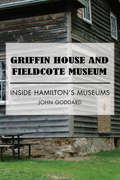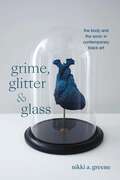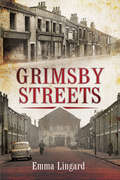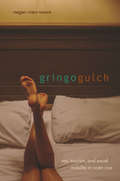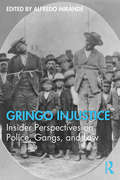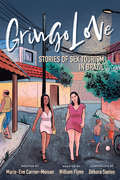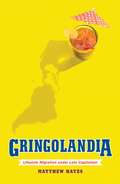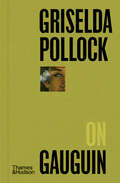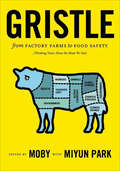- Table View
- List View
Grief Education for Caregivers of the Elderly
by Harold G Koenig Junietta B MccallThrough firsthand accounts and research, Grief Education for Caregivers of the Elderly focuses on the education, training, and support of individuals who care for the elderly. This book provides caregivers with methods to cope with grief and loss and will help educators design programs that meet the needs of their consumers: the elderly and their families, friends, and service providers. From Grief Education for Caregivers of the Elderly, you'll learn how to cope with the stress and emotions of caregiving and improve the quality of services to your patients. With an emphasis on caregivers of the institutionalized elderly and the special services provided by clergy, chaplains, and pastoral counselors, Grief Education for Caregivers of the Elderly offers the caregiver or educator several model workshops focusing on grief, loss, and bereavement care. Grief Education for Caregivers of the Elderly contains proven methods and strategies that will sharpen and enhance your caregiving skills, including: focusing on the emotional responses and phases of dying, including denial, anger, and acceptance, to help patients deal with death considering physical and administrative atmosphere and your elderly population when setting goals and designing workshops to provide optimal patient/resident care discussing the themes of grief and loss, stress management, handling change, and promoting self-care for caregivers in workshops and through self-evaluations developing workshops that open with grief history surveys and attitude checklists, discuss normative development and issues of old age, and have themes based on the biological, psychosocial, and spiritual needs of the elderly person providing caregivers with an opportunity to practice what they have learned through case studies, simulated role play, open discussions, and care plan designing thinking about your own mortality and learning about your feelings and ideas of growing oldUtilized at a psychiatric nursing home facility of New Hampshire Hospital, the workshop exercises in Grief Education for Caregivers of the Elderly have allowed caregivers to express personal feelings; talk about beliefs and experiences; learn about biological, psychosocial, and spiritual processes of grief and phases of bereavement; and apply these understandings and insights into typical caregiving situations. Grief Education for the Caregivers of the Elderly gives you the framework for such a program, using vignettes, composite case material, poetry, and a holistic approach to health care to emphasize the importance of your emotional health and enhanced care of the elderly.
Grief Is Love: Living with Loss
by Marisa Renee LeeA trusted grief expert shares advice on how to navigate the loss of a loved one in this incisive and compassionate guide: &“calm, lucid prose… humanizing exploration of coping with the life-changing tides of loss&” (Kirkus Reviews).In Grief is Love, author Marisa Renee Lee reveals that healing does not mean moving on after losing a loved one—healing means learning to acknowledge and create space for your grief. It is about learning to love the one you lost with the same depth, passion, joy, and commitment you did when they were alive, perhaps even more. She guides you through the pain of grief—whether you&’ve lost the person recently or long ago—and shows you what it looks like to honor your loss on your unique terms, and debunks the idea of a grief stages or timelines. Grief is Love is about making space for the transformation that a significant loss requires. In beautiful, compassionate prose, Lee elegantly offers wisdom about what it means to authentically and defiantly claim space for grief&’s complicated feelings and emotions. And Lee is no stranger to grief herself, she shares her journey after losing her mother, a pregnancy, and, most recently, a cousin to the COVID-19 pandemic. These losses transformed her life and led her to question what grief really is and what healing actually looks like. In this book, she also explores the unique impact of grief on Black people and reveals the key factors that proper healing requires: permission, care, feeling, grace and more. The transformation we each undergo after loss is the indelible imprint of the people we love on our lives, which is the true definition of legacy. At its core, Grief is Love explores what comes after death, and shows us that if we are able to own and honor what we&’ve lost, we can experience a beautiful and joyful life in the midst of grief.
Grief Works: Stories of Life, Death and Surviving
by Julia SamuelA warm, moving and practical guide to grief from a leading bereavement counsellor, Grief Works features deeply affecting case studies of the author's clients, which will appeal to readers of Atul Gawande's Being Mortal, Stephen Grosz's The Unexamined Life and Paul Kalanithi's When Breath Becomes Air. <P><P>Death is the last taboo in our society, and grief is still profoundly misunderstood. So many of us feel awkward and uncertain around death, and shy away from talking honestly with family and friends. <P><P>Grief Works is a compassionate guide that will inform and engage anyone who is grieving, from the "expected" death of a parent to the sudden unexpected death of a small child, and provide clear advice for those seeking to comfort the bereaved. <P><P>With deeply moving case studies of real people's stories of loss, and brilliantly accessible and practical advice, Grief Works will be passed down through generations as the definitive guide for anyone who has lost a loved one, and revolutionize the way we talk about life, loss and death.
Grief Works: Stories of Life, Death, and Surviving
by Julia SamuelAn instant bestseller in the UK, Grief Works is a profoundly optimistic and compassionate handbook for anyone suffering a loss—from the expected death of a parent to the sudden death of a child or spouse—as well as a guide for those who want to help their grieving loved ones.Death affects us all. Yet it is still the last taboo in our society, and grief is still profoundly misunderstood. So many of us feel awkward and uncertain around death, and shy away from talking honestly with family and friends. Julia Samuel, a grief psychotherapist, has spent twenty-five years working with the bereaved and understanding the full repercussions of loss. In Grief Works Samuel shares case studies from those who have experienced great love and great loss—and survived. People need to understand that grief is a process that has to be worked through, and Samuel shows if we do the work, we can begin to heal. The stories here explain how grief unmasks our greatest fears, strips away our layers of protection, and reveals our innermost selves. Intimate, clear, warm, and helpful, Grief Works addresses the fear that surrounds death and grief and replaces it with confidence. Samuel is a caring and deeply experienced guide through the shadowy and mutable land of grief, and her book is as invaluable to those who are grieving as it is to those around them. She adroitly unpacks the psychological tangles of grief in a voice that is compassionate, grounded, real, and observant of those in mourning. Divided into case histories grouped by who has died—a partner, a parent, a sibling, a child, as well section dealing with terminal illness and suicide—Grief Works shows us how to live and learn from great loss.
Grief and Bereavement in Contemporary Society: Bridging Research and Practice (Routledge Mental Health Classic Editions)
by Robert A. Neimeyer; Darcy L. Harris; Howard R. Winokuer; Gordon F. ThorntonGrief and Bereavement in Contemporary Society is the authoritative guide to the study of and work with major themes in bereavement. The classic edition includes a new preface from the lead editors discussing advances in the field since the book’s initial publication. The book’s chapters synthesize the best of research-based conceptualization and clinical wisdom across 30 of the most important topics in the field. The volume’s contributors come from around the world, and their work reflects a level of cultural awareness of the diversity and universality of bereavement and its challenges that has rarely been approximated by other volumes. This is a readable, engaging, and comprehensive book that shares the most important scientific and applied work on the contemporary scene with a broad international audience. It’s an essential addition to anyone with a serious interest in death, dying, and bereavement.
Grief and Loss: Theories and Skills for the Helping Professions
by Katherine WalshLoss is a part of every life, and grief related to loss is inescapable. It can result in distress that impacts work, learning, rehabilitation, spiritual beliefs, social relationships, health, mental health, and well-being. Helping professionals who encounter grief reactions in multiple settings are often not trained to identify and respond to the many complex grief-related problems of clients. Without the opportunity to learn how to assess and address grief, many may lack confidence in acknowledging loss and providing effective support. Although grieving is an extremely painful part of life, integration and adjustment are possible, and meaning can be made from loss. Readers will find many examples from caring and resilient students, interdisciplinary professionals, teachers, clients, and family members who have learned to make meaning from loss. The content of the third edition has been significantly influenced by the COVID-19 pandemic, the opioid addiction crisis, and increased awareness of racial trauma and injustice. The book provides a foundation for understanding, assessing, and responding effectively to grief and loss. The content is designed for students and professionals who find themselves working in proximity to loss, trauma, and grief in various capacities—educator, advocate, case manager, counselor, mental health and health care provider, and more. The work is vitally important, and the rewards for helping others cope with grief and loss are substantial.
Grief's Country: A Memoir in Pieces (Made in Michigan Writers Series)
by Gail GriffinGail Griffin had only been married for four months when her husband’s body was found in the Manistee River, just a few yards from their cabin door. The terrain of memoir is full of stories of grief, though Grief’s Country: A Memoir in Pieces is less concerned with the biography of a love affair than with the lived phenomenon of grief itself—what it does to the mind, heart, and body; how it functions almost as an organism. The book’s intimacy is at times nearly disarming; its honesty about struggling through grief’s country is unfailing. The story is told "in pieces" in that it is ten essays of varying forms, punctuated by four original poems, that examine facets of traumatic grief, memory, and survival. While a reader will perceive a forward trajectory, the book resists anything like a clear chronology, offering a picture of deep grief as something that defies the linear and explodes time. "A Strong Brown God" tells the story of two of Griffin’s significant relationships—with her husband, Bob, and with the Manistee River—and includes the history of what drew them all together. "Grief’s Country" follows Griffin from the morning after Bob’s death through the first disoriented, fractured months of PTSD. "Heartbreak Hotel" takes Griffin on a tragicomical flight the first Christmas after Bob’s death to a Jamaican resort—which includes an unscheduled stop at Graceland—where she contemplates the notions of home and haven. Grief’s Country will speak directly to anyone who has lost a dearly loved one, offering not one story but ten different faces of grief to contemplate. It will also appeal to general readers of memoir, including teachers and students of nonfiction, especially as it includes a variety of formal models. Those interested in the subject area of death and dying will find it useful as a book that bypasses recovery narratives, truisms, and "stages of grief" to get as close as possible to the experience itself.
Grief: A Philosophical Guide
by Michael CholbiAn engaging and illuminating exploration of grief—and why, despite its intense pain, it can also help us growExperiencing grief at the death of a person we love or who matters to us—as universal as it is painful—is central to the human condition. Surprisingly, however, philosophers have rarely examined grief in any depth. In Grief, Michael Cholbi presents a groundbreaking philosophical exploration of this complex emotional event, offering valuable new insights about what grief is, whom we grieve, and how grief can ultimately lead us to a richer self-understanding and a fuller realization of our humanity.Drawing on psychology, social science, and literature as well as philosophy, Cholbi explains that we grieve for the loss of those in whom our identities are invested, including people we don't know personally but cherish anyway, such as public figures. Their deaths not only deprive us of worthwhile experiences; they also disrupt our commitments and values. Yet grief is something we should embrace rather than avoid, an important part of a good and meaningful life. The key to understanding this paradox, Cholbi says, is that grief offers us a unique and powerful opportunity to grow in self-knowledge by fashioning a new identity. Although grief can be tumultuous and disorienting, it also reflects our distinctly human capacity to rationally adapt as the relationships we depend on evolve.An original account of how grieving works and why it is so important, Grief shows how the pain of this experience gives us a chance to deepen our relationships with others and ourselves.
Grieving While Black: An Antiracist Take on Oppression and Sorrow
by Breeshia WadeAn exploration of grief and racial trauma through the eyes of a Black end-of-life caregiver.Most of us understand grief as sorrow experienced after a loss—the death of a loved one, the end of a relationship, or a change in life circumstance. Breeshia Wade approaches grief as something that is bigger than what's already happened to us—as something that is connected to what we fear, what we love, and what we aspire toward. Drawing on stories from her own life as a Black woman and from the people she has midwifed through the end of life, she connects sorrow not only to specific incidents but also to the ongoing trauma that is part and parcel of systemic oppression.Wade reimagines our relationship to power, accountability, and boundaries and points to the long-term work we must all do in order to address systemic trauma perpetuated within our interpersonal relationships. Each of us has a moral obligation to attend to our own grief so that we can responsibly engage with others. Wade elucidates grief in every aspect of our lives, providing a map back to ourselves and allowing the reader to heal their innate wholeness.
Griffin House and Fieldcote Museum: Inside Hamilton's Museums
by John GoddardInside Hamilton’s Museums helps to satisfy a growing curiosity about Canada’s steel capital as it evolves into a post-industrial city and cultural destination. In this special excerpt we visit two sites, Griffin House and the Fieldcote Memorial Park and Museum. Griffin House honours one of Ancaster's earliest black settlers, Enerals Griffin, and pays tribute to the black slaves from the United States who fled to freedom in Upper Canada. Fieldcote Museum was built as private home and now functions as a gallery for exhibitions alternating between local history and the visual arts. John Goddard takes us on a detailed tour of the historic homes and gardens, providing fascinating historical background and insight.
Grilling Dahmer: The Interrogation Of "The Milwaukee Cannibal"
by Patrick Kennedy Robyn MaharajThe Milwaukee detective who interrogated the notorious serial killer shares a vivid chronicle of what was revealed during the weeks-long encounter. In the late hours of July 22, 1991, Detective Patrick &“Pat&” Kennedy of the Milwaukee Police Department was asked to respond to a possible homicide. Little did he know that he would soon be delving into the dark mind of one of America's most notorious serial killers, the &“Milwaukee Cannibal&” Jeffrey Dahmer. As the media clamored for details, Kennedy spent the next six weeks, sixteen hours a day, locked in an interrogation room with Dahmer. There the thirty-one-year-old killer described in lurid detail how he lured several young men to his apartment where he strangled, sexually assaulted, dismembered, and in some cases, cannibalized his victims. In Grilling Dahmer,Kennedy takes readers inside the mind of evil as he patiently, meticulously, listens to unspeakable horrors.
Grime, Glitter, and Glass: The Body and the Sonic in Contemporary Black Art (The Visual Arts of Africa and its Diasporas)
by Nikki A. GreeneIn Grime, Glitter, and Glass, Nikki A. Greene examines how contemporary Black visual artists use sonic elements to refigure the formal and philosophical developments of Black art and culture. Focusing on the multimedia art of Renée Stout, Radcliffe Bailey, and María Magdalena Campos-Pons, Greene traces the intersection of the visual’s sonic possibilities with the Black body’s physical, representational, and metaphorical use in art. She employs her concept of “visual aesthetic musicality” to interpret Black visual art by examining the musical genres of jazz and rap, along with the often-overlooked innovations of funk and rumba, within art historiography. From Bailey’s use of multilayered surfaces of glitter, mud, and recycled materials to meditate on Sun Ra’s Afrofuturism to Stout’s life-size cast of her own body that recalls funk musician Betty Davis to Campos-Pons’s performative and sculptural references to sugar that resonate with the legacy of Celia Cruz, Greene outlines how these artists use mediums such as molded glass sculptures, viscous wet plaster, and dazzling mannequin heads to enhance the manifestations of Black identity. By foregrounding the sonic elements of their work, Greene demonstrates that these artists use sound to make themselves legible, recognizable, and audible.
Grimm and Grimmer: Classic Fairy Tales Rebooted
by Mark RussellThis collection of fourteen reimagined Grimm's fairy tales from award-winning author Mark Russell offers a biting new perspective while proving the classics never go out of style. In the two hundred years since Jacob and Wilhelm Grimm first published their collection of fairy tales, things haven&’t gotten any less—ahem—grim. So tuck yourself in with some of the classic bedtime stories, retold by award-winning author Mark Russell. Grimm and Grimmer offers fourteen of the Brothers Grimm&’s finest stories—a mix of well-known tales including "Rapunzel" and "Cinderella," and ones you might not know, like "The Boy Who Didn&’t Know Fear"—reconceived for a twenty-first century while staying true to their roots At times both laugh-out-loud funny and darker than a wicked stepmother&’s heart, this captivating collection captures all the absurdities and anxieties of the world just outside our windows.
Grimms' Tales around the Globe: The Dynamics of Their International Reception
by Vanessa Joosen Gillian LatheyGrimms' fairy tales are among the best-known stories in the world, but the way they have been introduced into and interpreted by cultures across the globe has varied enormously. In Grimms' Tales around the Globe, editors Vanessa Joosen and Gillian Lathey bring together scholars from Asia, Europe, and North and Latin America to investigate the international reception of the Grimms' tales. The essays in this volume offer insights into the social and literary role of the tales in a number of countries and languages, finding aspects that are internationally constant as well as locally particular. In the first section, Cultural Resistance and Assimilation, contributors consider the global history of the reception of the Grimms' tales in a range of cultures. In these eight chapters, scholars explore how cunning translators and daring publishers around the world reshaped and rewrote the tales, incorporating them into existing fairy-tale traditions, inspiring new writings, and often introducing new uncertainties of meaning into the already ambiguous stories. Contributors in the second part, Reframings, Paratexts, and Multimedia Translations, shed light on how the Grimms' tales were affected by intermedial adaptation when traveling abroad. These six chapters focus on illustrations, manga, and film and television adaptations. In all, contributors take a wide view of the tales' history in a range of locales--including Poland, China, Croatia, India, Japan, and France. Grimms' Tales around the Globe shows that the tales, with their paradox between the universal and the local and their long and world-spanning translation history, form a unique and exciting corpus for the study of reception. Fairy-tale and folklore scholars as well as readers interested in literary history and translation will appreciate this enlightening volume.
Grimsby Streets
by Emma LingardA &“fascinating&” walk through the history of one English port town, told through the names of its streets—includes photos (Books Monthly). With a history that dates back to the days of the Vikings, Grimsby, on England&’s eastern coast, has served as a hub for shipping companies and fishermen and a home to generations of citizens. Arranged alphabetically, Grimsby Streets is a journey through time, examining the meanings and origins of many of the town&’s street names, from their association with the Danish settlers through to the Victorian era and the men who helped develop the town and build its surrounding docks. Names of the great and good who were forgotten until now are explored, as well as some of the many famous people who were born there, and where they lived. The book also covers numerous incidents that occurred on Grimsby's streets, providing colorful insight into the history of this once-famous fishing port and some of the many wonderful buildings that stood there. Included throughout are a selection of old photographs, some of which have never been published before, a reminder of what this town was like before change and demolition in the 1960s.
Gringo Gulch: Sex, Tourism, and Social Mobility in Costa Rica
by Megan Rivers-MooreThe story of sex tourism in the Gringo Gulch neighborhood of San José, Costa Rica could be easily cast as the exploitation of poor local women by privileged North American men—men who are in a position to take advantage of the vast geopolitical inequalities that make Latin American women into suppliers of low-cost sexual labor. But in Gringo Gulch, Megan Rivers-Moore tells a more nuanced story, demonstrating that all the actors intimately entangled in the sex tourism industry—sex workers, sex tourists, and the state—use it as a strategy for getting ahead. Rivers-Moore situates her ethnography at the intersections of gender, race, class, and national dimensions in the sex industry. Instead of casting sex workers as hapless victims and sex tourists as neoimperialist racists, she reveals each group as involved in a complicated process of class mobility that must be situated within the sale and purchase of leisure and sex. These interactions operate within an almost entirely unregulated but highly competitive market beyond the reach of the state—bringing a distinctly neoliberal cast to the market. Throughout the book, Rivers-Moore introduces us to remarkable characters—Susan, a mother of two who doesn’t regret her career of sex work; Barry, a teacher and father of two from Virginia who travels to Costa Rica to escape his loveless, sexless marriage; Nancy, a legal assistant in the Department of Labor who is shocked to find out that prostitution is legal and still unregulated. Gringo Gulch is a fascinating and groundbreaking look at sex tourism, Latin America, and the neoliberal state.
Gringo Injustice: Insider Perspectives on Police, Gangs, and Law
by Alfredo MirandéThe recent mass shooting of 22 innocent people in El Paso by a lone White gunman looking to "Kill Mexicans" is not new. It is part of a long, bloody history of anti-Latina/o violence in the United States. Gringo Injustice brings this history to life, shedding critical light on the complex relationship between Latinas/os and the United States’ legal and judicial system. Contributors with first-hand knowledge and experience, including former law enforcement officers, ex-gang members, attorneys, and community activists, share insider perspectives on the issues facing Latinas/os and initiate a critical dialogue on this neglected topic. Essays examine the unauthorized use of deadly force by police and patterned incidents of lynching, hate crimes, gang violence, and racial profiling. The book also highlights the hyper-criminalization of barrio youth and considers wide-ranging implications from the disproportionate imprisonment of Latinas/os. Gringo Injustice provides a comprehensive and powerful look into the Latina/o community’s fraught history with law enforcement and the American judicial system. It is an essential reference for students and scholars interested in intersections between crime and communities of Color, and for use in Sociology, Latino Studies, Ethnic Studies, Chicano Studies, Criminology, and Criminal Justice.
Gringo Love: Stories of Sex Tourism in Brazil (ethnoGRAPHIC)
by Marie-Eve Carrier-MoisanIn the city of Natal in northeastern Brazil, several local women negotiate the terms of their intimate relationships with foreign tourists, or gringos, in a situation often referred to as "sex tourism." These women have different experiences, but they share a similar desire to "escape" the social conditions of their lives in Brazil. Based on original ethnographic research and presented in graphic form, Gringo Love explores the hopes, dreams, and realities of these women against a backdrop of deep social inequality and increasing state surveillance leading up to the 2014 World Cup and 2016 Olympic Games. It touches on important contemporary issues, including sexual economics, transnational mobility, romantic imaginaries, gender representation, race and inequality, and visual methods. The graphic story is accompanied by analysis and contextual discussion, which encourage readers to engage with the narrative and expand their understanding of the broader social issues therein.
Gringolandia: Lifestyle Migration under Late Capitalism (Globalization and Community)
by Matthew HayesA telling look at today&’s &“reverse&” migration of white, middle-class expats from north to south, through the lens of one South American city Even as the &“migration crisis&” from the Global South to the Global North rages on, another, lower-key and yet important migration has been gathering pace in recent years—that of mostly white, middle-class people moving in the opposite direction. Gringolandia is that rare book to consider this phenomenon in all its complexity.Matthew Hayes focuses on North Americans relocating to Cuenca, Ecuador, the country&’s third-largest city and a UNESCO World Heritage Site. Many began relocating there after the 2008 economic crisis. Most are self-professed &“economic refugees&” who sought offshore retirement, affordable medical care, and/or a lower–cost location. Others, however, sought adventure marked by relocation to an unfamiliar cultural environment and to experience personal growth through travel, illustrative of contemporary cultures of aging. These life projects are often motivated by a desire to escape economic and political conditions in North America. Regardless of their individual motivations, Hayes argues, such North–South migrants remain embedded in unequal and unfair global social relations. He explores the repercussions on the host country—from rising prices for land and rent to the reproduction of colonial patterns of domination and subordination. In Ecuador, heritage preservation and tourism development reflect the interests and culture of European-descendent landowning elites, who have most to benefit from the new North–South migration. In the process, they participate in transnational gentrification that marginalizes popular traditions and nonwhite mestizo and indigenous informal workers. The contrast between the migration experiences of North Americans in Ecuador and those of Ecuadorians or others from such regions of the Global South in North America and Europe demonstrates that, in fact, what we face is not so much a global &“migration crisis&” but a crisis of global social justice.
Griselda Pollock on Gauguin (Pocket Perspectives #6)
by Griselda PollockGriselda Pollock, feminist art historian and longstanding advocate of gender and racial inclusivity, unpacks the racist, sexist, and imperialist underpinnings of works created by Gauguin and others as they competed for preeminence in the European artistic avant-garde of the 1880s and '90s. Surprising, questioning, challenging, enriching: the Pocket Perspectives series presents timeless works by writers and thinkers who have shaped the conversation across the arts, visual culture, and history. Celebrating the undiminished vitality of their ideas today, these covetable and collectable little books embody the best of Thames & Hudson.
Gristle: From Factory Farms to Food Safety
by Miyun ParkThe musician and activist offers &“a collection of compelling, well-researched essays . . . shining light on the world of agribusiness&” and Big Meat (Publishers Weekly). For everyone from omnivores to vegans, this eye-opening guide offers food for thought on today&’s meat industry. Moby, renowned musician and passionate vegan, and Miyun Park, leading food policy activist, bring together experts from diverse backgrounds including: farming, workers&’ rights activism, professional athletics, science, environmental sustainability, food business, and animal welfare advocacy. Together, they eloquently lay out how industrial animal agriculture unnecessarily harms workers, communities, the environment, our health, our wallets, and animals. In the tradition of Michael Pollan&’s The Omnivore&’s Dilemma, Gristle combines hard-hitting facts with a light touch and includes informative charts and illustrations depicting the stark realities of America&’s industrial food system. Contributors include: Brendan BrazierLauren BushChristine Chavez and Julie Chavez RodriguezMichael Greger, MDSara Kubersky and Tom O&’HaganFrances Moore Lappé and Anna LappéJohn MackeyDanielle Nierenberg and Meredith NilesWayne PacellePaul and Phyllis Willis
Gristmills of Central Texas (Images of America)
by Charlene Ochsner CarsonGristmills were once commonplace in Texas. There was hardly a river, a creek, or a stream without one. The purpose of the gristmill was to grind wheat into flour and corn into meal. Prior to the water-powered gristmill, grinding was a tedious, time-consuming task that was usually performed by hand using some type of mortar and pestle. When a gristmill began operating in an area, settlers from near and far traveled to the mill to have their grain ground. The gathering of these settlers and farmers at the mill was the beginning of many settlements that grew into the Texas towns of today. Many of these picturesque settings have become major tourist destinations.
Grit-Tempered (Florida Museum of Natural History: Ripley P. Bullen Series)
by Nancy Marie White Lynne P. Sullivan Rochelle A. MarrinanThis volume documents the lives and work of pioneering women archaeologists in the southeastern United States from the 1920s through the 1960s. A landmark portrayal of pioneering women in science, reissued on its 25th anniversary Praise for the first edition: “Highly recommended for any archaeologist interested in the history of the discipline.”—Choice “An important addition to the history of southeastern archaeology, bringing to light the often undervalued or forgotten contributions of the many women who helped to make archaeology what it is today.”—Bulletin of the History of Archaeology “This is a needed history, providing details both mundane and critical, personal and professional, feminist and archaeological.”—Journal of the History of the Behavioral Sciences “Demonstrat[es] that each woman, regardless of how, when, or why she came to Southeastern archaeology, has made significant contributions to the field, clearing the path for women today to pursue successful careers in archaeology.”—North American Archaeologist “The regional focus lends an intimate and immediate quality to this series of biographical-historical narratives. . . . [It is] heartening to know that some among us have thought to capture these women’s stories for others to tell in the future and to provide a basis for better understanding how our roles and histories influence our work as archaeologists.”—Journal of Anthropological Research “These fascinating brief portraits, variously based on documents, interviews, or autobiographical statements, reveal much of the changing circumstances in the context of which women’s work must be understood.”—National Women’s Studies Association Journal “A readable book that provides a lot of interesting material on the history of Southeastern archaeology.”—Journal of Alabama Archaeology “A delight to read, often humorous, sometimes sobering. It has much to offer readers, ranging from the history of archaeology and the role of the WPA in southeastern archaeology, to an intimate view of careers of influential women in science, to discussions of the study of gender in history and archaeology. It is a volume to be read and shared.”—Arkansas Historical Quarterly “An easily read, thought-provoking book.”—St. Augustine Archaeological Association Quarterly Book Review Updated with a new preface on the 25th anniversary of its first publication, this volume documents the lives and work of pio
Grita
by María Fernanda Ampuero«Estoy aterrorizada y, sin embargo, no quiero ofenderlo» De niñas, nos enseñan que siempre debemos gustar, ser buenas y agradables. Y la protagonista del relato conoce perfectamente las consecuencias de no gustar, de decir que no al hombre del parque, al hermano de su amiga, a su match de Tinder… En este relato, María Fernanda Ampuero lleva la necesidad de gustar al límite, retratando con crudeza la violencia estructural que sufren niñas y mujeres. «No importa quién seas, siempre eres menos frente a un grupo de hombres»
Gritos y susurros I: Experiencias intempestivas de 38 mujeres (Gritos y susurros #Volumen 1)
by Denise DresserEste libro incluye relatos de 38 mujeres mexicanas quienes explican en qué situaciones se han sentido poco preparadas o han sido tomadas por sorpresa. Libro bestseller escrito por Denise Dresser, una de las analistas políticas más críticas y respetadas en México. Los textos reunidos en este libro dan palabra y voz a 38 mujeres mexicanas de mundos diversos y trayectorias diferentes, reunidas con el afán de contestar a preguntas como: ¿Qué te ha tomado por sorpresa? ¿En qué momentos y frente a qué circunstancias te has sentido poco preparada? a través de textos heterogéneos, las autoras invitan al lector a visitar sus propios momentos de desconcierto.
